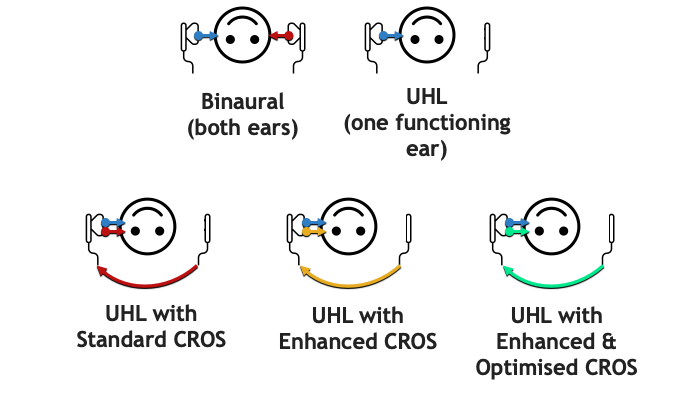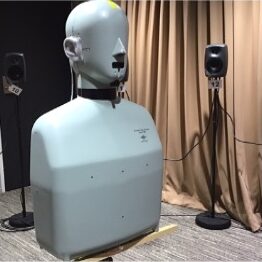Enhancing reliable monaural cues for sound lateralisation using CROS
Project Goals
Although most major hearing device manufacturers provide a technological solution specifically for people with unilateral hearing loss, such as a CROS (contralateral routing of signals) hearing aid, the benefits this device provides in improving speech reception may be detrimental to a person’s ability to localise or lateralise sound sources. Localisation cues from the head-shadow effect are often indistinguishable to the better ear in the presence of the CROS-transmitted signal; a problem that remains an unresolved and largely unaddressed disability among this population.
This study had the objective of developing a proof-of-concept approach to CROS signal processing that provides a reliable cue to sound location while not significantly degrading speech understanding. By applying and trialling methods of enhancing the routed signal, it was theorized that a person would be able to better discern lateralisation and potentially improve localisation of sound sources around them. A confirmed proof-of-concept would lead to further development in signal processing for CROS devices and potentially advise future clinical fitting and verification procedures for such technology

Results
A proof-of-concept approach to enhancing a CROS signal for better sound lateralisation and localisation was verified, and showed no degradation of speech in noise discrimination among all the test subjects. As expected, performance in lateralising and localising sound sources was poor with only one ear and while listening through a standard CROS system. However, performance increased consistently among all participants when the enhanced CROS signal was introduced, and increased further with additional adjustments to the parameters of the enhanced signal. No negative effects on speech understanding were shown when comparing performance between the standard CROS system and the enhanced CROS system. The results were consistent across all participants and test conditions, and showed a proof-of-concept to support further study.


